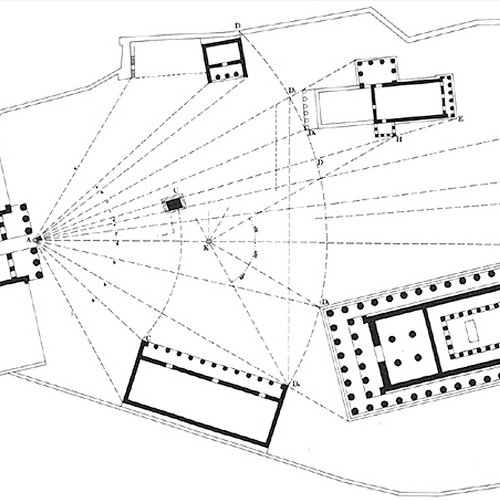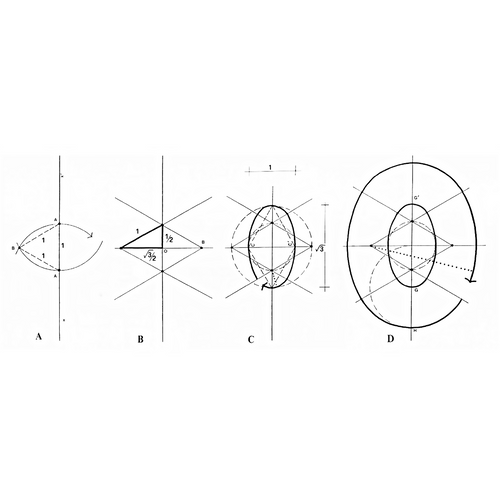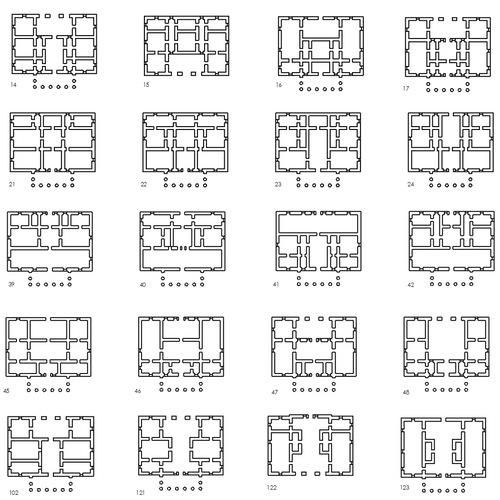Architectonics Summer Abroad: Art and Architecture in Greece

ARCH 3007/6007
Summer Semester
Dr. Athanassios Economou
School of Architecture, College of Design, Georgia Institute of Technology
An on-site immersive study of the architecture and the visual arts in Greece and South Italy from the Bronze Age to the Hellenistic times. The architectural theory draws upon Vitruvius and discusses its various redescriptions from Alberti onwards till contemporary interpretations. The formal theory draws upon Euclidean geometry, Pythagorean arithmetic, and theory of proportion and symmetry. The examples are culled from the early bronze-age to works of the Hellenistic period and include the architecture of the Greek temples, houses, courtyards, stoas, theaters, stadia to the early instances of libraries and basilicas.
This course is part of a three-course sequence on the interrelated subjects of town-planning, architecture, and the visual arts from the Bronze Age to the eighteenth century in Greece and Italy. This course is distinguished from the second and third in the sequence by its emphasis on the archaic, classical and Hellenistic Greek period. The core of the class is the study of cities, buildings, sculpture, and painting of the ancient Greek world in Greece and South Italy. The course includes visits and lectures on some of the most important sites and museums of the ancient Greek world, including Knossos, Mycenae, Olympia, Delphi, Epidaurus, and Athens in Greece and Paestum in South Italy. This is a Core IMPACTS course that is part of the Humanities area (Core Impact A).
The course may be taken well as a prequel or sequel to the ARCH 6210: Architectonics, with a shifted emphasis in examples drawn from on-site visits during the study abroad program.
Links
Architectonics Summer Abroad: Art and Architecture in Rome

ARCH 3008/6008
Summer Semester
Dr. Myrsini Mamoli
School of Architecture, College of Design, Georgia Institute of Technology
An on-site immersive study of the architecture and the visual arts in Rome from the Bronze Age to the Baroque. The architectural theory draws upon Vitruvius and Alberti including contemporary interpretations too and the formal theory draws upon Euclidean and perspective geometry including state-of-the-art digital heritage media. The examples are culled from the early bronze-age to the regal period, roman republic, roman empire, medieval Rome, Roman Renaissance and Baroque periods and includes the study of temples, houses, amphitheaters, libraries, basilicas, churches, among others.
This course is part of a three-course sequence on the interrelated subjects of town-planning, architecture, and the visual arts from the Bronze Age to the eighteenth century in Greece and Italy. The purpose of the course is to provide an intensive on-site investigation of the role that the arts have played in the development of Roman civilization, and by extension the influence of this civilization on the historical development of the visual arts in the western world. The core of the class is the study of cities, buildings, sculpture, and painting of the ancient Roman world and their transformation through the mediaeval, renaissance and baroque periods. The course is organized around a core of a two-week residence period in Rome and includes visits and lectures on some of the most important sites and museums in the city as well as in Pompeii, Ostia and Tivoli. This is a Core IMPACTS course that is part of the Humanities area (Core Impact A).
The course may be taken well as a prequel or sequel to the ARCH 6210: Architectonics, with a shifted emphasis in examples drawn from on-site visits during the study abroad program.
Links
Architectonics Summer Abroad: Art and Architecture in N. Italy

ARCH 3009/6009
Summer Semester
Pr. Danielle Willkens
School of Architecture, College of Design, Georgia Institute of Technology
An on-site immersive study of the architecture and the visual arts in medieval, renaissance, and baroque North Italy. The architectural theory draws upon Vitruvius and Alberti and current architectural theoretical works, and the formal theory draws upon Euclidean and perspective geometry including state-of-the-art digital heritage media. The formal theory draws upon perspective geometry. The examples are culled from early medieval works to the high baroque period and include the architecture of the churches, baptisteries, houses, courtyards, stoas, libraries and basilicas.
This course is part of a three-course sequence on the interrelated subjects of town-planning, architecture, and the visual arts from the Bronze Age to the eighteenth century in Greece and Italy. This course is distinguished from the first and second in the sequence by its emphasis on the medieval, renaissance and baroque periods in North Italy. The core of the class is the study of cities, buildings, sculpture, and painting of the. This is a Core IMPACTS course that is part of the Humanities area (Core Impact A). The course is organized around a two-week residence period in Florence, Vicenza, Verona and Venice, with day trips to other important cities (Siena, Pienza) and it includes visits to and lectures on the most important relevant sites and museums.
The purpose of the course is to provide an intensive on-site investigation of the role that the arts have played in the development of Italian civilization, and by extension the influence of this civilization on the historical development of the visual arts and architecture in the western world. The core of the class is a two-week intensive, on-site study of the cities, buildings, and art of medieval, renaissance, and baroque Italy.
The course may be taken well as a prequel or sequel to the ARCH 6210: Architectonics, with a shifted emphasis in examples drawn from on-site visits during the study abroad program.

